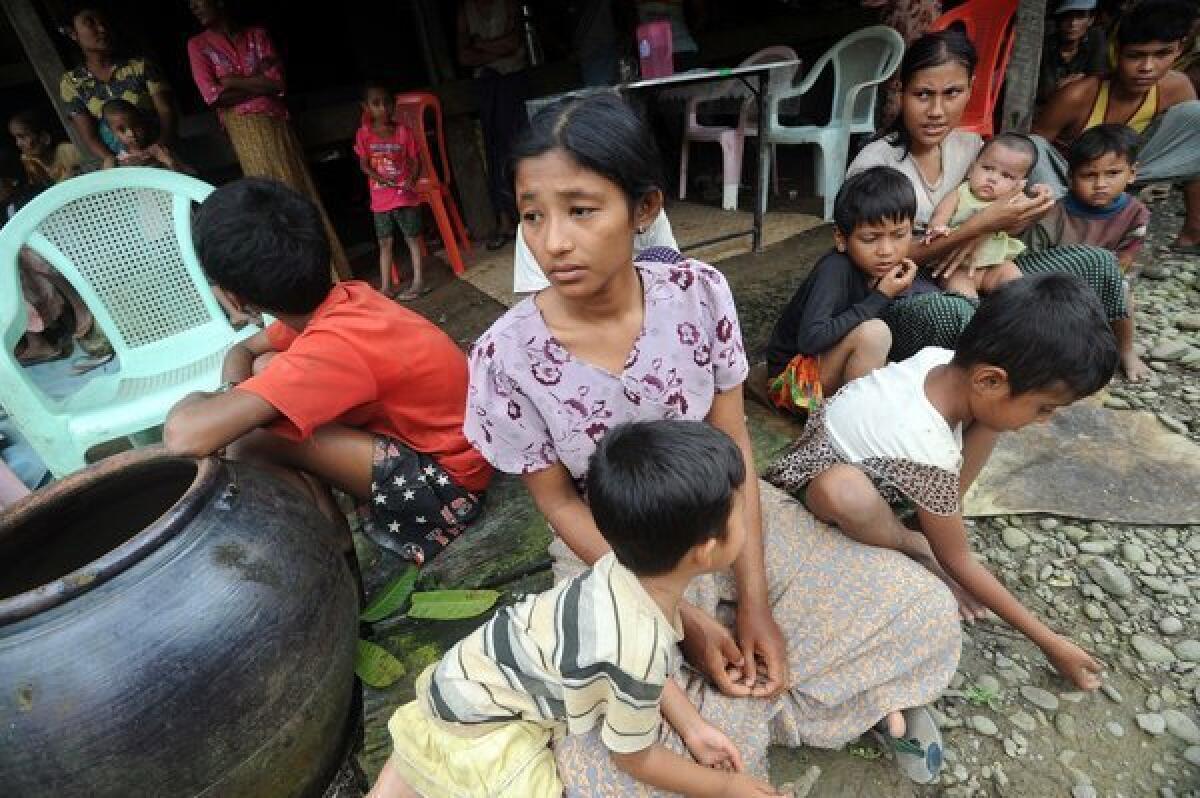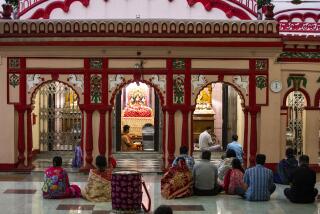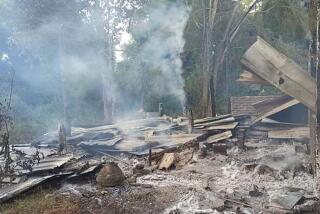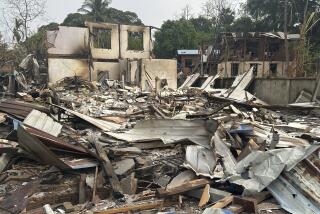Myanmar villages burned in deadly religious violence

THANDWE, Myanmar -- At least five people have been killed and hundreds displaced in the latest wave of religious violence in Myanmar.
Muslims near the coastal town of Thandwe said they spent Tuesday night hiding in forests as mobs of Buddhist men armed with machetes stormed a string of villages, burning mosques and any home not marked with a Buddhist flag.
By Wednesday, the military had moved in to stop the violence. Officers spent the day combing through still-smoldering buildings and removing the bodies of five slain Muslims.
U Myint Hlaing, who represents the region in Myanmarâs parliament, said nearly 100 homes had been destroyed and that an investigation is underway.
In the last 15 months there have been repeated clashes between Myanmarâs Buddhist majority and Muslim minority, with hundreds killed and hundreds of thousands displaced.
Human rights groups and the United Nations have blamed the government for not acting to stop the attacks and stamp out a popular anti-Muslim campaign waged by some Buddhist monks who the rights activists say are helping to fuel them.
International concern over the violence has cast a shadow on the image of President Thein Sein, a former army general whoâs been widely praised for leading the army to cede power after decades of authoritarian rule and then establishing a nominally civilian government.
In a message published in state-run newspapers Wednesday, Sein condemned the sectarian conflict, which he said threatens the governmentâs reform process.
[Updated, 11:40 a.m. PDT Oct. 2: He flew to Thandwe on Wednesday as part of a tour of Rakhine state, which has seen the brunt of the casualities from religious violence.]
Still, he and other government officials, including opposition leader and Nobel Peace Prize winner Aung San Suu Kyi, have held back from outrightly denouncing the â969â anti-Muslim movement and its leader, Buddhist monk Ashin Wirathu.
Wirathu preaches that Muslims are out to destroy the Buddhist religion. In speeches across the country and in widely disseminated videos, he has ordered Buddhists to stop patronizing Muslim shops and has called for a law that would prohibit Buddhist women from marrying outside of their faith.
According to several Muslims who survived Tuesdayâs clashes near Thandwe, Wirathu came to the area several months ago to give a speech.
Along the road to Thabyuchaing, the small farming village hardest hit by the violence, billboards painted with the 969 logo rise from rice paddies and hundreds have marked their homes and shops with traditional red, yellow and blue Buddhist flags.
Muslim farmer Hla Myint said he and his family were roused before dawn early Tuesday by several hundred people storming down the street waving swords and Buddhist flags. He said the men were not locals.
Myint said the police arrived and took several people into custody, but several hours later the mob returned and went on the attack, burning dozens of homes and the mosque across the street from the thatched roof hut he shares with his wife and 11-year-old daughter.
He said he and his family spent the night hiding in the woods and came out Wednesday morning once they received word that the military had arrived in town.
He said his family has always lived in the area and have never had problems with Buddhists in the past.
A Buddhist woman from the same village said she did not know how the violence started but that tensions between the groups have been high lately. But Ye Ye Myint, 45, said Wirathuâs group had nothing to do with those tensions. â969 is a peace movement,â she said.
Anti-Muslim sentiment is not a new thing in Myanmarâs history. In the 1960s, many Muslims of Indian descent were forced out of the country. The latest violence flared up last summer when Buddhist throngs razed Muslim villages and killed hundreds near Sittwe, a town located, like Thandwe, in western Rakhine.
That outbreak targeted ethnic Rohingya Muslims, a group viewed by local Buddhists as illegal immigrants from Bangladesh, even though many Rohingya families have lived in Myanmar for generations.
In the ensuing months, the violence spread across the country to target non-Rohingya Muslims. In the town of Myteikla this spring, a dispute at a gold shop led a mob of about 1,000 Buddhists to kill at least 44 Muslims, including 20 students and several teachers at an Islamic school.
The victims of this weekâs violence were Kamans, a different Muslim minority group, whose citizenship is recognized by the government.
On Wednesday, several dozen survivors gathered in the yard of a home that had not been destroyed.
Mu Mu Khine, 24, holding her three children on her lap, said she is now homeless after watching her home burn Tuesday. She said she didnât know if she and her family would rebuild it, or if theyâd even want to, after the violence.
âI have no idea,â she said.
ALSO:
Five Greenpeace activists charged with piracy in Russia
Netanyahu warns of Iran âcharm offensive,â deceit on nuclear arms
Travelers, traders among potential foreign victims of U.S. shutdown
Twitter: @katelinthicum
This story was reported with a grant from the International Reporting Project.
More to Read
Sign up for Essential California
The most important California stories and recommendations in your inbox every morning.
You may occasionally receive promotional content from the Los Angeles Times.











